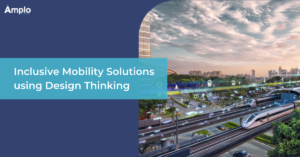| EthicalDesign: Empowering Humane Production |
Unleash the potential of Ethical Design for humane production. Embrace sustainability, social responsibility, and positive impacts. Empower your business.
Ethical Design
Leading design magazine, browser plugin, and news source, Muzli defines Ethical Design Thinking as “[…] a methodology that encourages designers to focus on human-oriented values throughout their design process.” They further break down the process into 5 exercises, viz. Design Goal, Personal Values, Product Values, Values and Spaces (where to practice those values), and Reframing Your Design Goals based on analysis of previous exercises. These exercises are created to bring together designers, researchers, engineers, PMs, and other stakeholders to discuss a shared ethical goal.
The concept of ethical design allows designers and design teams to create products, services, and systems that don’t harm and improve human situations. Ethical Design Thinking is a methodology that encourages designers to focus on human-oriented values throughout their design process. Ethical Design Thinking encourages designers to consider the greater impact of their designs. Ethical design extends to all people and other living things that are in any way involved in the product, service, and/or system lifecycle.
Additionally, ethical design has a great deal to do with values – whether it’s at the level of an individual, organization, or society. Ethical design is designing great products alongside your morals and beliefs and the principles of your business. What you create, whether a website, a marketing campaign, or a product affects real people and those effects can create ripples.
As design-thinkers, we are trained to solve problems and make people’s lives better, but rarely do we consider what ‘better’ actually is. It is important to understand that what we design is not neutral. In fact, both ethics and design are subjective. So, how do we evaluate whether a design or design strategy is ethical?
We can begin evaluating the ethics of design by laying down some universal principles that can act as a common denominator, across different disciplines, demographics, and design problems. By that definition, the principles for ethical design should revolve around empathy, respect for human rights, effort, and experience, for which we can refer to sources like the United Nations Declaration of Human Rights. Alternatively, we can also understand and illustrate the principles of ethical design in terms of an “Ethical Hierarchy of Needs” pyramid created by Aral Balkan and Laura Kalbag, that illustrates the core of ethical design and how each layer of the pyramid rests and depends on the layer beneath it to ensure that the design is ethical.
Having defined ethical design and its underlying principles, how do we ensure that those designing on a large scale for a vast population of users, design ethically? After all, ethics are rules or codes of conduct that hold up only if everyone is following them in good faith.
Unfortunately, there isn’t a clear answer to that question. We can begin by cultivating a culture of respect and empathy by way of training, brainstorming, and including diverse groups of people, in the discourses and spaces we can control–whether it’s our families or teams at work. In addition, however, we must hold those who design for the world e.g. corporations and governments, accountable for the ethical implications of their design. This means seeking sustainable alternatives, boycotting, and petitioning against brands or products that do not display respect or consideration for specific groups of users.
In a world that is rapidly changing and innovating at lightning speed, we are simultaneously becoming more connected through technology and yet more isolated through widening socio-economic divides. In such a world, ethical, accessible, and inclusive design is not just an abstract concept but an urgent necessity.









































































